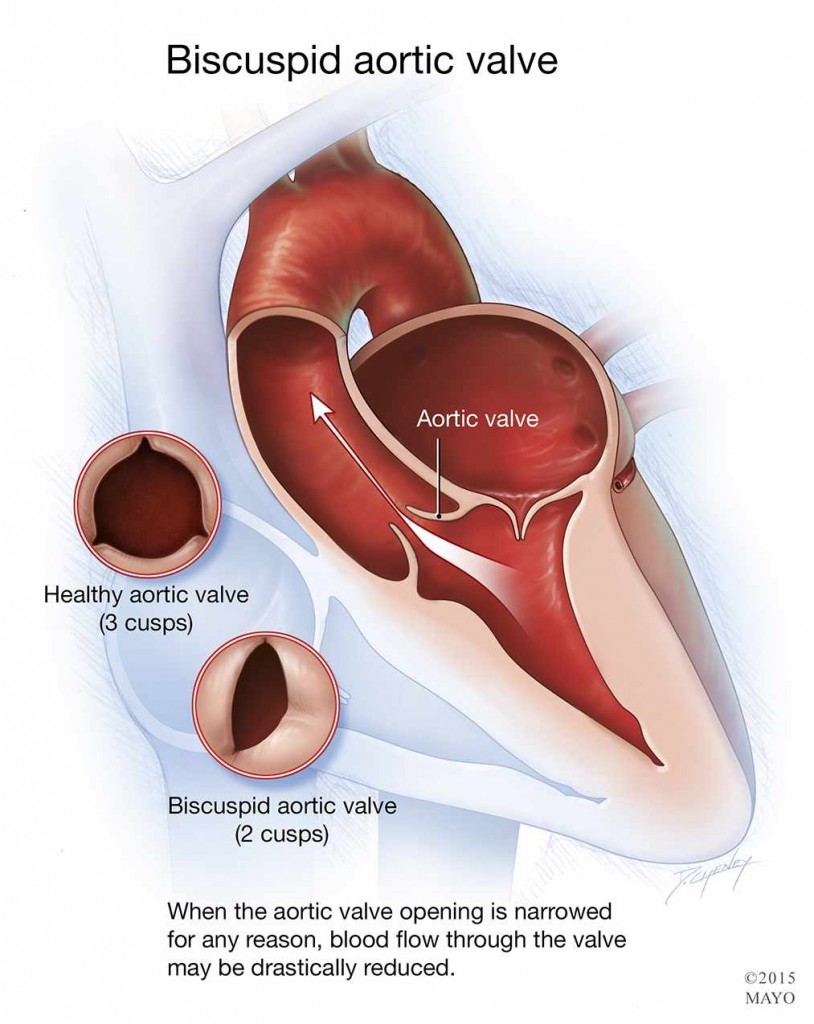-
Cardiovascular
Mayo Clinic Q and A: Mild to Moderate Aortic Stenosis Typically Doesn’t Require Surgery

DEAR MAYO CLINIC: I have a condition called aortic stenosis, which I am told prevents blood from getting out of my heart. Is it true that I don’t have to have surgery to have this valve replaced? What are the risks of having this condition and not having surgery to treat it?
ANSWER: Whether you need surgery to replace your aortic valve due to aortic stenosis depends on the severity of your condition. Mild to moderate aortic stenosis typically does not require surgery. But, surgery is necessary for severe cases of aortic stenosis. If left untreated, severe aortic stenosis can result in heart failure.
The aortic valve is located between the bottom left chamber of your heart, the left ventricle, and the main artery that leads away from your heart, the aorta. The valve is made of three flaps of tissue, called leaflets, that swing open when blood pushes against them. After blood has gone through the valve, the leaflets swing closed to keep the blood from flowing back into the heart.
Aortic stenosis happens when the opening in the aortic valve is narrowed. Valves affected by stenosis limit blood flow. Your heart has to work harder to squeeze blood through the narrow valve than it does when the valve opening is normal. Aortic stenosis can be caused when a person is born with an aortic valve that has only two leaflets, rather than three. More commonly, though, the condition develops as a result of aging.
Aortic stenosis tends to get worse over time. When it first develops, mild aortic stenosis typically doesn’t have any symptoms. But, as the condition progresses, the extra work required of the heart to pump blood through the narrow valve may cause symptoms, such as fatigue, shortness of breath, chest pain, lightheadedness or fainting. In some cases, though, these symptoms can be subtle, and they may go unnoticed.
Heart failure can happen before symptoms develop or become obvious. For that reason, surgery to replace the aortic valve often is recommended when there is severe aortic stenosis, even if no symptoms are apparent. Your doctor can determine the severity of your condition using a test called an echocardiogram — an ultrasound of the heart.
Replacing the aortic valve is the only effective treatment for stenosis. It relieves obstruction to blood flow through the heart, improves symptoms, helps your heart work better and allows you to live longer. During the procedure, a surgeon removes the narrowed aortic valve and replaces it with a mechanical valve or a tissue valve.
Valve replacement generally is performed during open-heart surgery. But, a less invasive approach, called transcatheter aortic valve replacement, or TAVR, is another option. In TAVR, doctors insert a catheter into an artery in your leg or into a small incision in your chest. They guide the catheter to your heart and into your aortic valve. A balloon at the tip of the catheter, which has a folded valve around it, is then inflated. This pushes open the aortic valve, stretches the valve opening and expands the folded valve into the aortic valve. Doctors then deflate the balloon and remove the catheter. In some cases, a self-expanding valve may be inserted into the aortic valve, and a balloon isn’t used.
If you have severe aortic stenosis, but you don’t have any symptoms or any evidence of heart failure, it is possible that surgery to replace the valve could be delayed. But, in that situation, you would need close supervision and follow-up care with your doctor. Eventually, everyone with severe aortic stenosis does need valve replacement surgery at some point. — Dr. Vuyisile Nkomo, Cardiovascular Diseases, Mayo Clinic, Rochester, Minnesota









